Tesla is the first to sell 1,000 electric cars for the U.S. highways. Like its Roadster, the company is going zero to sixty in less than four seconds. In August the company reported its first profits. With $465 million in DOE loans, the company is developing a roomy Model S hatchback that starts at $57,400, about half the price of the Roadster. The Roadster is battery-electric with a 240 mile range; the Model S may have a remarkable electric range of 300 miles per charge.
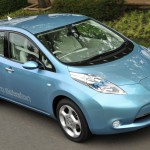 Nissan will be the first auto maker to put over 10,000 electric cars on U.S. highways. Major cities have already committed to over 10,000 Nissan Leaf and over 10,000 charge stations. Nissan will start taking dealer orders from individuals in the spring of 2010. Nissan plans to make the 5-seat hatchback affordable, but sale and/or lease options have not been finalized. The Nissan Leaf is battery-electric with a 100 mile range per charge.
Nissan will be the first auto maker to put over 10,000 electric cars on U.S. highways. Major cities have already committed to over 10,000 Nissan Leaf and over 10,000 charge stations. Nissan will start taking dealer orders from individuals in the spring of 2010. Nissan plans to make the 5-seat hatchback affordable, but sale and/or lease options have not been finalized. The Nissan Leaf is battery-electric with a 100 mile range per charge.
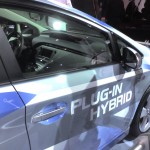 Toyota Prius Plug-in Hybrid (PHV) will build on the million car success of Toyota hybrids. At first glance, the PHV looks like another Prius until you spot the J1772 plug for smart charging. Five hundred PHV are now being put into fleet trails from cities to car sharing services. In 2011, U.S. dealer orders should begin. Toyota will initially control costs by only using a 5kWh battery for a 14 mile electric range. In 2012, Toyota will expand its offerings to include a pure battery-electric FT-EV.
Toyota Prius Plug-in Hybrid (PHV) will build on the million car success of Toyota hybrids. At first glance, the PHV looks like another Prius until you spot the J1772 plug for smart charging. Five hundred PHV are now being put into fleet trails from cities to car sharing services. In 2011, U.S. dealer orders should begin. Toyota will initially control costs by only using a 5kWh battery for a 14 mile electric range. In 2012, Toyota will expand its offerings to include a pure battery-electric FT-EV.
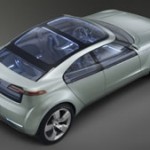 General Motors wants to be the plug-in leader with the Chevy Volt, a plug-in hybrid with 40 miles of electric range and up to 500 miles by engaging a small gasoline engine to act as a generator. Bob Lutz says than Chevy hopes to build at least 8,000 in 2011. GM has a complete E-Flex roadmap which envisions added offerings. Converj may become the Cadillac of extend-range electrics. In the future, Opel may offer a diesel plug-in hybrid in Europe. Look for a range versus cost battle with Toyota, as the Volt achieves more electric range by adding to vehicle cost with a 16kWh battery.
General Motors wants to be the plug-in leader with the Chevy Volt, a plug-in hybrid with 40 miles of electric range and up to 500 miles by engaging a small gasoline engine to act as a generator. Bob Lutz says than Chevy hopes to build at least 8,000 in 2011. GM has a complete E-Flex roadmap which envisions added offerings. Converj may become the Cadillac of extend-range electrics. In the future, Opel may offer a diesel plug-in hybrid in Europe. Look for a range versus cost battle with Toyota, as the Volt achieves more electric range by adding to vehicle cost with a 16kWh battery.
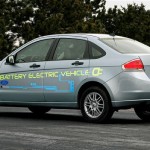 Ford will be selling at least three electric cars by the end of 2011. The best seller will be the Ford Focus EV a battery-electric that we expect to aggressively compete with the Nissan Leaf. Ford will be taking orders for a 2012 plug-in hybrid; likely, it will be the Ford Focus available the way the customer wants it as battery-electric, plug-in hybrid, hybrid, or fuel efficient sedan. Ford is already selling the electric Transit Connect compact van. Focus EV Report and Test Drive
Ford will be selling at least three electric cars by the end of 2011. The best seller will be the Ford Focus EV a battery-electric that we expect to aggressively compete with the Nissan Leaf. Ford will be taking orders for a 2012 plug-in hybrid; likely, it will be the Ford Focus available the way the customer wants it as battery-electric, plug-in hybrid, hybrid, or fuel efficient sedan. Ford is already selling the electric Transit Connect compact van. Focus EV Report and Test Drive 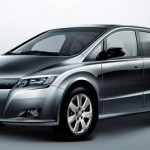 BYD has legendary investor Warren Buffet as a major investor over $200 million invested. BYD is now selling its plug-in hybrid and E6 battery-electric car in China. We expect the plug-in hybrid to be a freeway-speed electric car price leader in the U.S. in 2011. The E6 battery-electric is likely to be more expensive with enough batteries for a 250 electric range. These may take longer than expected to be selling in the U.S. due to tough safety, regulatory hurdles, and charging standards. Fleet sales are likely before BYD establishes consumer channels.
BYD has legendary investor Warren Buffet as a major investor over $200 million invested. BYD is now selling its plug-in hybrid and E6 battery-electric car in China. We expect the plug-in hybrid to be a freeway-speed electric car price leader in the U.S. in 2011. The E6 battery-electric is likely to be more expensive with enough batteries for a 250 electric range. These may take longer than expected to be selling in the U.S. due to tough safety, regulatory hurdles, and charging standards. Fleet sales are likely before BYD establishes consumer channels.
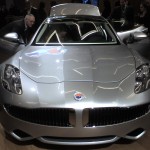 Fisker Karma is a luxury sports plug-in hybrid with prices starting around $90,000. With a $528 million DOE conditional loan, Fisker is moving into production with plans to start shipping Karmas to dealers in late 2010. A more affordable family sedan is planned for 2012.
Fisker Karma is a luxury sports plug-in hybrid with prices starting around $90,000. With a $528 million DOE conditional loan, Fisker is moving into production with plans to start shipping Karmas to dealers in late 2010. A more affordable family sedan is planned for 2012.
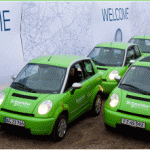 Think has been selling its smaller battery-electric City car in Europe for years. Many of the Copenhagen climate delegates were transported with Think EV. Now Think is evaluating eight U.S. states to determine the best site for a new 16,000 EV per year factory. With new capital from EnerDel, Valmet, and Kleiner Perkins, Think hopes to have its financial struggles in the rear view mirror. Think hopes to have 2,500 on U.S. roads by the end of 2010. Clean Fleet Report
Think has been selling its smaller battery-electric City car in Europe for years. Many of the Copenhagen climate delegates were transported with Think EV. Now Think is evaluating eight U.S. states to determine the best site for a new 16,000 EV per year factory. With new capital from EnerDel, Valmet, and Kleiner Perkins, Think hopes to have its financial struggles in the rear view mirror. Think hopes to have 2,500 on U.S. roads by the end of 2010. Clean Fleet Report
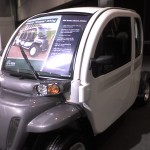 Chrysler has about 40,000 of the GEM 25-mph light electric vehicles (LEV) on the U.S. roads in university towns, fleets, and retirement communities. With federal and local tax breaks, the net cost is often under $10,000. With the growth of electric cars and charging stations, sales may actually increase for cost-leading LEV. Yes, under the new Fiat leadership it was disappointing that Chrysler dropped its ENVI sports car, SUV, and minivan plug-in offerings. We will see if GEM remains part of Chrysler.
Chrysler has about 40,000 of the GEM 25-mph light electric vehicles (LEV) on the U.S. roads in university towns, fleets, and retirement communities. With federal and local tax breaks, the net cost is often under $10,000. With the growth of electric cars and charging stations, sales may actually increase for cost-leading LEV. Yes, under the new Fiat leadership it was disappointing that Chrysler dropped its ENVI sports car, SUV, and minivan plug-in offerings. We will see if GEM remains part of Chrysler.
Surprise – there is plenty of room for a U.S. start-up or a cost breakthrough offering from Asia. Some plans will see delays; others will accelerate.
Forecasts and Renewable Energy
Accenture forecasts 1.5 million electric vehicles in the United States by 2015. Over 10 million electric vehicles are easily possible by 2020.
Single electric utilities have scenarios for charging over one million electric vehicles in their own service area by 2020. With renewable energy investment required of utilities in 30 states, these utitilies are most interested in night time charging of electric vehicles with wind, geothermal, and hydropower. Utilities are also implementing smart grids and incentives for off-peak charging.
By 2011 year end, competition will be intense for electric car leadership. The above Top 10 describe our best guess about the market share leaders for delivered plug-in vehicles on the United States roads in 2011, although not necessarily in order of 2011 installed market share.
Battery electric vehicles, plug-in hybrids, and electric vehicles with range extended by engines or fuel cells were all considered.
Over 100 competitors will be fighting for U.S. share by 2012. Some may be struggle to get significant share due to the time and cost of safety and other regulatory approvals, delays in funding, unpleasant surprises from a battery, drive system, or component supplier. It’s a tough business. Even Tesla had to add 700 pounds and two years to get the first Roadsters in customers’ hands.
Volkswagen may teach everyone how to extend range by making vehicles light. The concept Up Light weighs just over 1,500 pounds, but we don’t expect U.S. sales in 2011. Zenn might be there with a commercialized EEstor ultracap.
China could have several price leaders being delivered to U.S. customers. India might bring us a Reva or Nano EV that under prices everyone. Mitsubishi or Subaru could make bigger U.S. electric plans.
Don’t count out the good old United States “can do” entrepreneurs with exciting innovation and venture capital backing. Some think that V-Vehicles, Aptera, or Miles will be on the list.
Source : Clean Fleet Report, 14/12/09
Aucun commentaire:
Enregistrer un commentaire